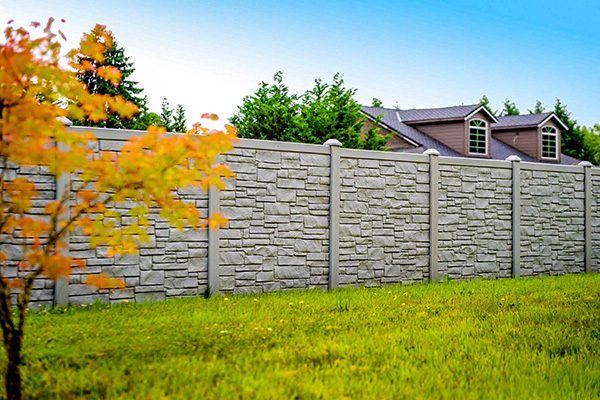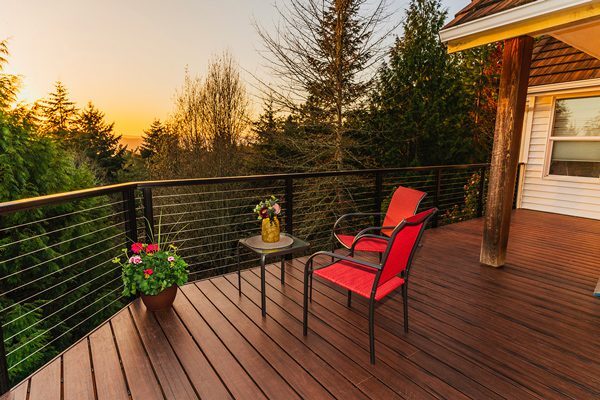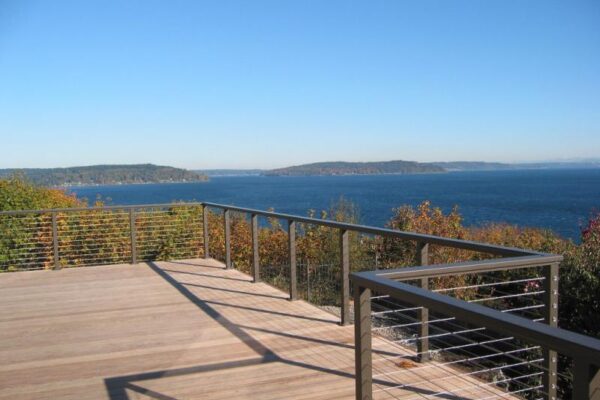The Benefits of Simulated Wood and Rock Fences
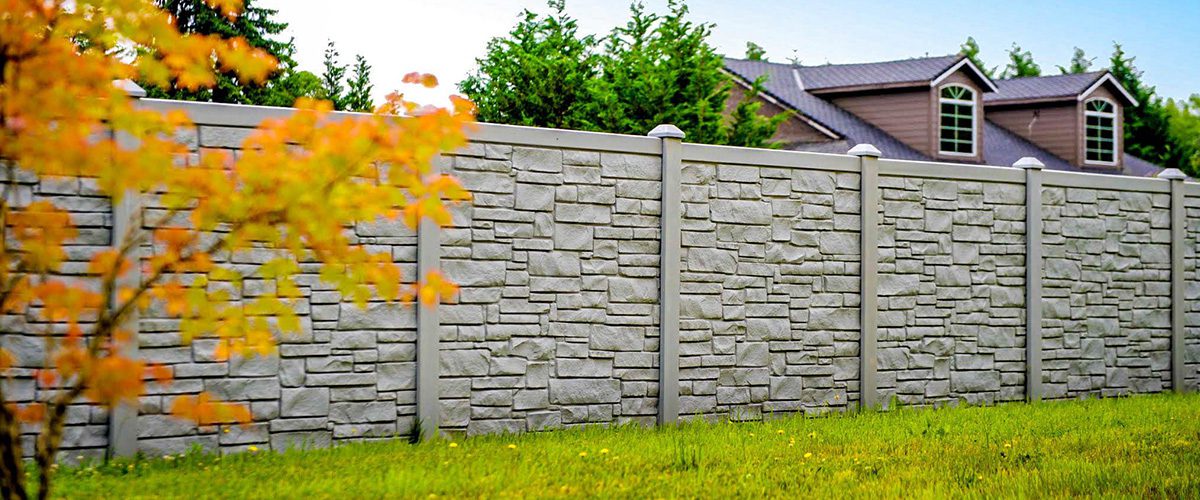
Simulated wood and rock fences are transforming how we think about creating boundaries around our homes and businesses. Their rise in popularity is likely because they merge the classic charm you’d get with natural materials with perks such as better durability and easy maintenance.
Whether you’re aiming to enhance your home’s exterior or secure a commercial property, simulated fencing offers an attractive, durable, and eco-friendly solution. Read on to explore the weather resistance of simulated materials, quality-of-life improvements provided by simulated fencing, environmental benefits, and how to choose a fence that best fits your needs.
The superior weather resistance of simulated material fencing
Wind resistance
Both Rick’s Sherwood Simulated Wood Fencing and Allegheny Simulated Rock Fencing are highly resistant to wind and have been tested to withstand constant winds of up to 110 MPH, perfect for homes along the coast or other windy areas.
The density and structural integrity of simulated fencing materials mean they can absorb and deflect wind pressure better than many natural materials, which might crack or break under similar stress. Also, the installation techniques used for simulated fences often involve deep post settings and reinforced anchoring systems that enhance their ability to stand firm against high winds.
Durable materials
Simulated wood and rock materials offer exceptional durability and maintenance benefits compared to their natural counterparts. Engineered to withstand harsh weather conditions, these materials are highly resistant to the damaging effects of sun, rain, and snow, making them excellent choices for Pacific Northwest homes. Among the benefits:
- Simulated wood maintains its integrity and appearance over time, unlike traditional wood, which is more susceptible to warping, cracking, or swelling with moisture.
- Simulated rock doesn’t erode or crumble under environmental stress, so you’ll enjoy a lasting aesthetic without the wear and tear that natural stone might exhibit.
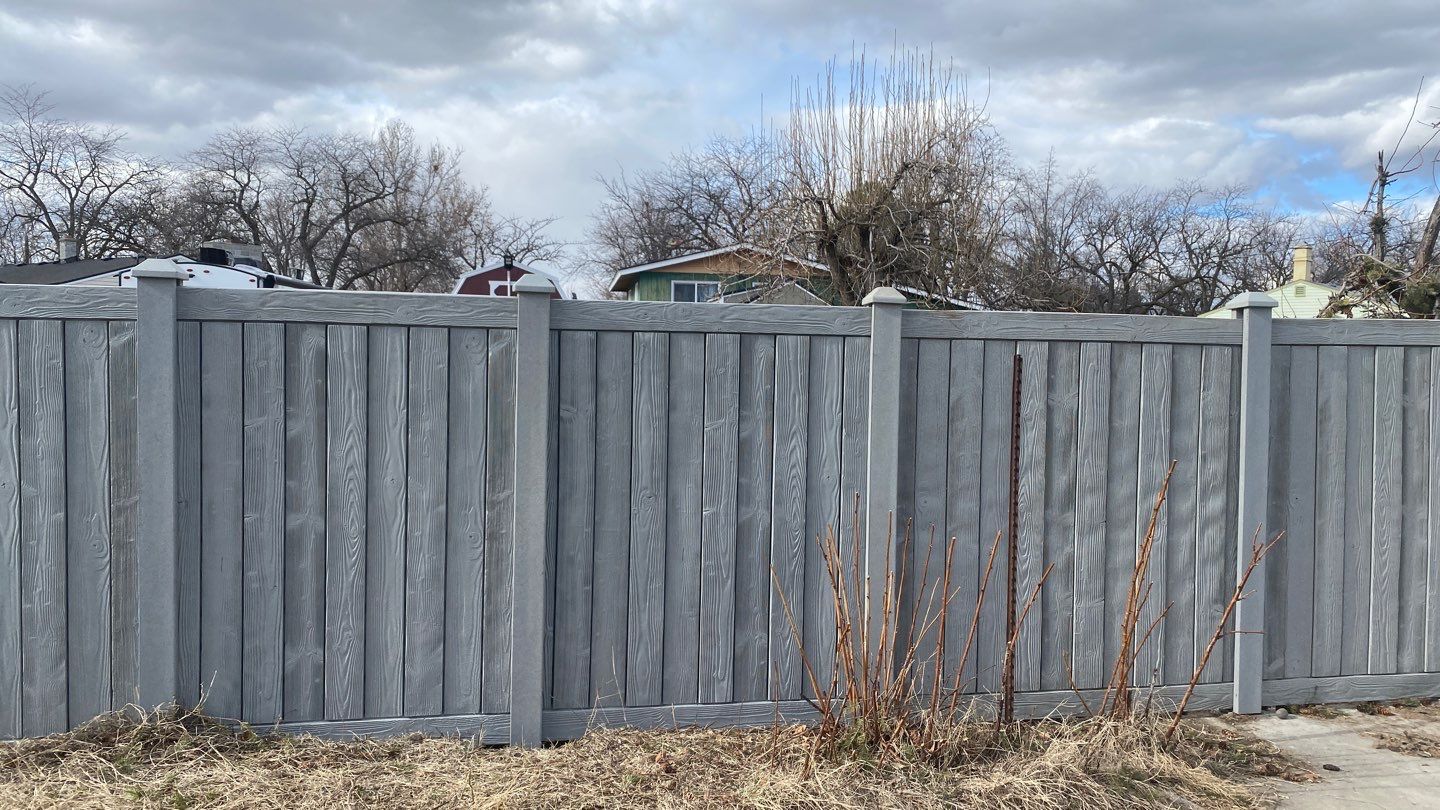
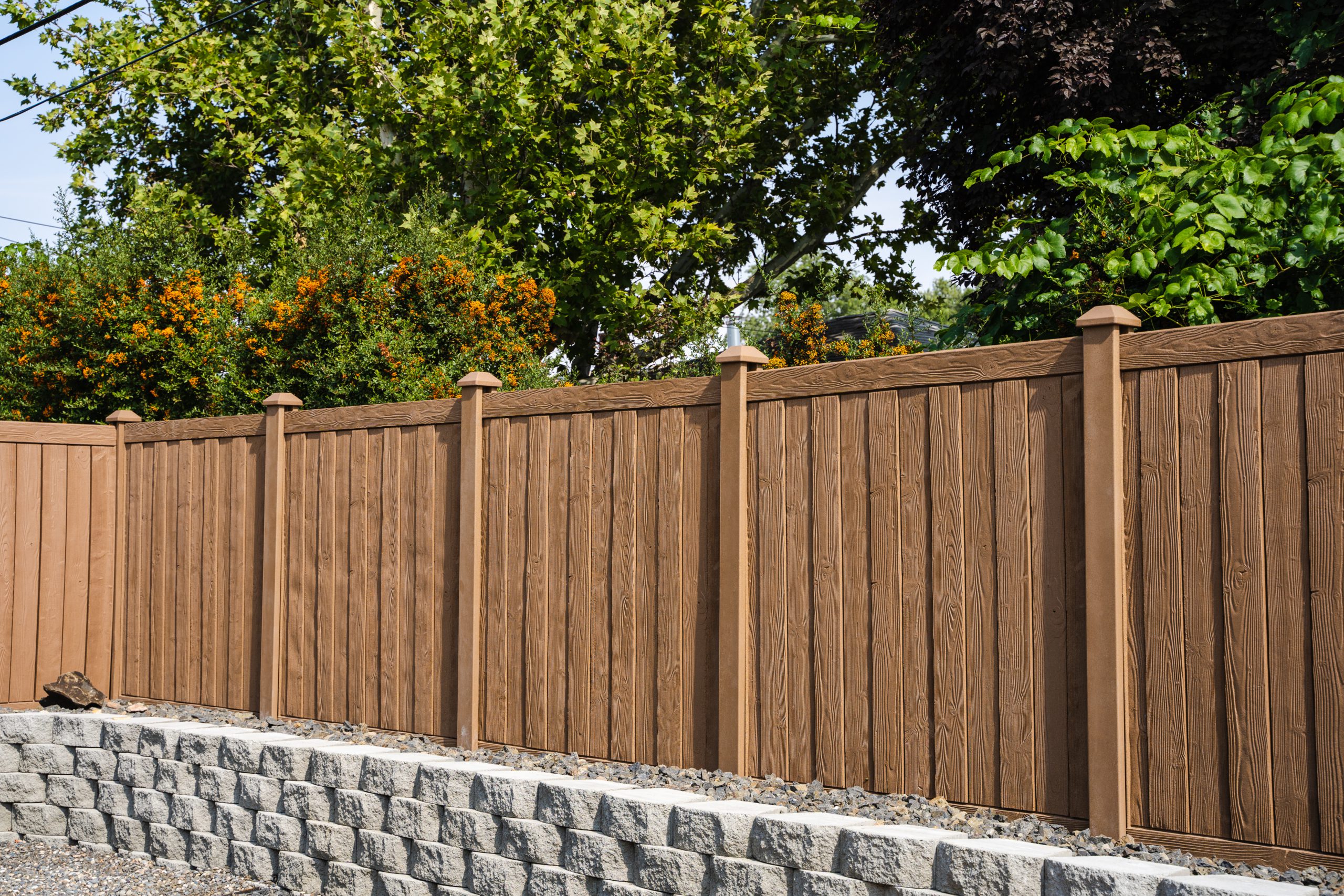
Soundproofing and low maintenance advantages of simulated material fencing
Soundproofing
With the ability to block 98% of direct noise, simulated material fencing offers excellent soundproofing benefits, making it an ideal choice for properties near busy streets, highways, or noisy urban environments.
Whether it’s simulated wood or rock, the thickness and solidity of the fence can absorb and deflect sound waves, creating a quieter, more peaceful outdoor and indoor environment. In addition to enhancing privacy, the soundproofing qualities of simulated material fencing contribute to a more enjoyable and restful living atmosphere, which can significantly improve residents’ quality of life.
Easy to maintain
Both simulated wood and rock are virtually maintenance-free. They don’t require the periodic staining, sealing, or painting that natural wood or rock might need. Less maintenance hassle means more free time and lower upkeep costs, providing long-term savings.
Resistance to pests is another significant advantage of using simulated materials. Traditional wood fences can fall prey to termites and other wood-boring insects, which can compromise a fence’s structural integrity. Although rock rarely degrades from these pests, it often houses bugs and other unwanted critters. With simulated fencing, you won’t have to spend as much time deterring these pests from the perimeter of your home.
The environmental benefits of simulated fencing
Simulated wood fencing offers significant environmental benefits. Crafted from a mix of recycled plastics and other synthetic materials, simulated wood reduces the demand for natural timber, helping to preserve forests. The manufacturing process of simulated wood also typically requires less energy and produces fewer emissions compared to processing and treating natural wood.
Simulated rock reduces the need for quarrying, a resource-intensive process that can lead to significant alterations in the landscape, including habitat destruction and soil erosion. Using simulated rock materials decreases the demand for natural rock extraction, helping minimize environmental disruption and the carbon footprint associated with traditional rock fencing materials.
Pick the right fence material for your property
To determine which fencing material is best for you, consider a few factors:
- Weather: Elements such as rain and sun can damage wooden materials, especially if they aren’t properly maintained, which can severely affect the life of your fence.
- Property size: Installing simulated materials may cost more upfront but could save you time and money due to their low maintenance nature.
- Aesthetic: The best material for the job often depends on the look you hope to achieve. Simulated fencing can be better customized to your desired look than most other materials.
Rick's Custom Fencing & Decking is the partner you need
When shopping for materials and an installation expert, we recommend finding a company with a history of positive reviews that can help with both. It’s best to provide as many details as possible upfront so the business can best fit your needs and vision for your new outdoor space.
If you’re ready to begin your journey to a fantastic new fence, Rick’s is here to help! Download our simulated fencing product brochure or contact our experts for a free estimate and to explore the best options for your property.

